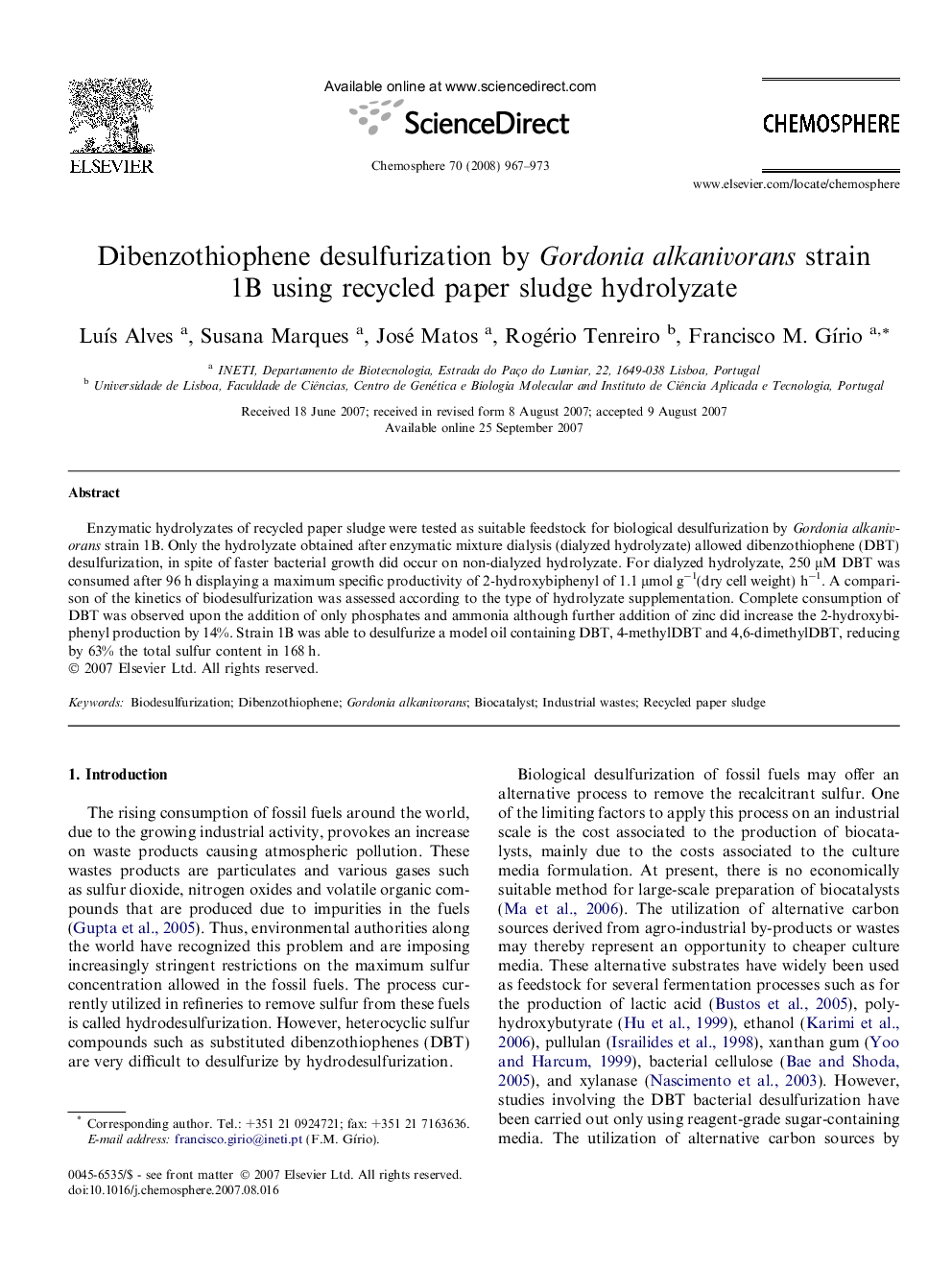| Article ID | Journal | Published Year | Pages | File Type |
|---|---|---|---|---|
| 4414674 | Chemosphere | 2008 | 7 Pages |
Enzymatic hydrolyzates of recycled paper sludge were tested as suitable feedstock for biological desulfurization by Gordonia alkanivorans strain 1B. Only the hydrolyzate obtained after enzymatic mixture dialysis (dialyzed hydrolyzate) allowed dibenzothiophene (DBT) desulfurization, in spite of faster bacterial growth did occur on non-dialyzed hydrolyzate. For dialyzed hydrolyzate, 250 μM DBT was consumed after 96 h displaying a maximum specific productivity of 2-hydroxybiphenyl of 1.1 μmol g−1(dry cell weight) h−1. A comparison of the kinetics of biodesulfurization was assessed according to the type of hydrolyzate supplementation. Complete consumption of DBT was observed upon the addition of only phosphates and ammonia although further addition of zinc did increase the 2-hydroxybiphenyl production by 14%. Strain 1B was able to desulfurize a model oil containing DBT, 4-methylDBT and 4,6-dimethylDBT, reducing by 63% the total sulfur content in 168 h.
